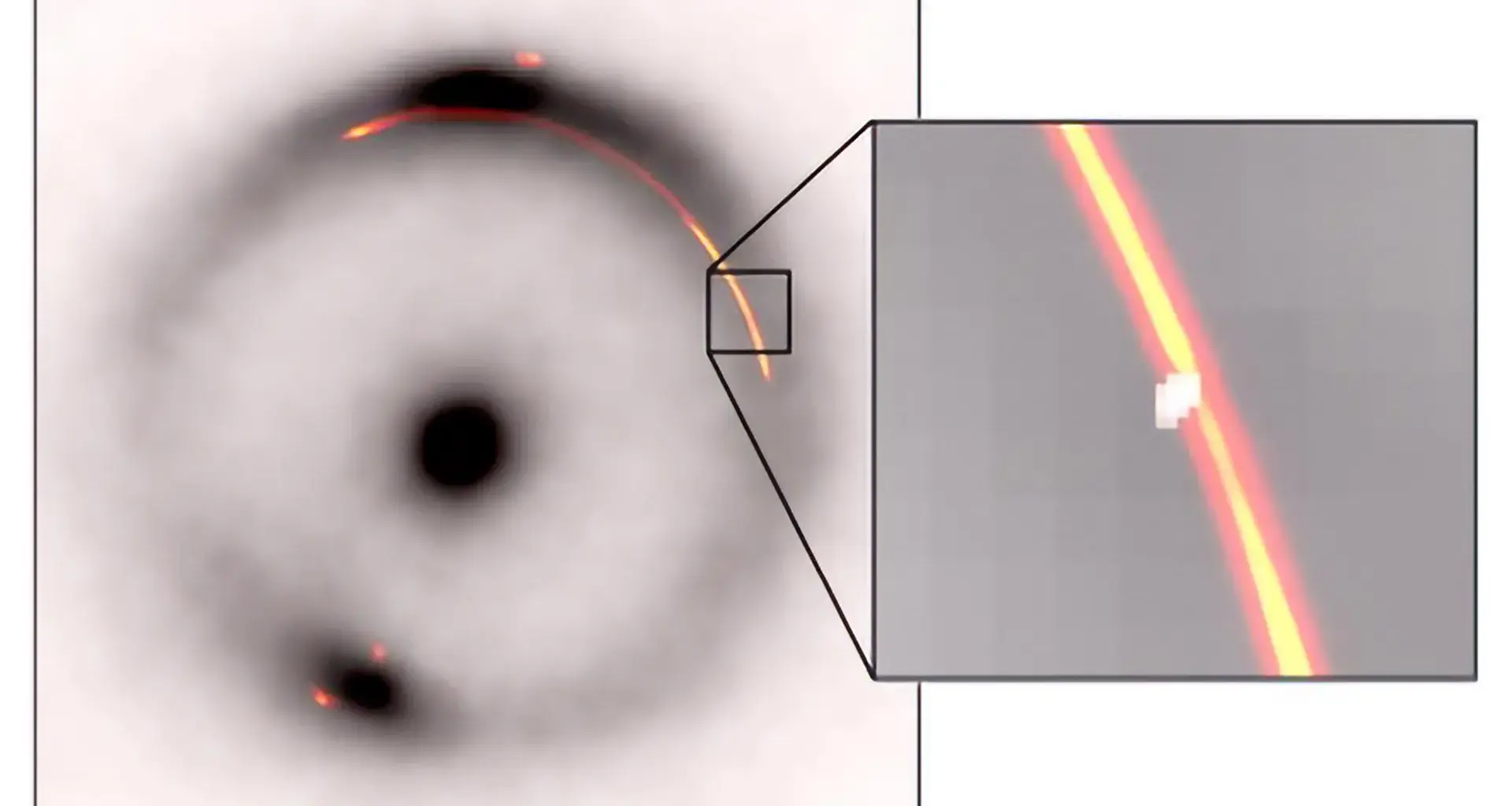Astronomers have used a worldwide array of telescopes to spot the smallest dark object ever identified in the universe. Discovering more of these faint, hidden masses and understanding what they are could help eliminate certain explanations for dark matter, the invisible material believed to make up roughly one-quarter of the cosmos. Details of the discovery appear in two studies published on Oct. 9 in Nature Astronomy and the Monthly Notices of the Royal Astronomical Society.
Because this object gives off no light or detectable radiation, scientists identified it through its gravitational pull on light passing nearby, an effect known as gravitational lensing. By studying how the light was distorted, researchers could calculate how much matter was packed inside the unseen object.
The newly found object is so small that its presence appeared only as a tiny “pinch” in the distorted image created by a much larger gravitational lens — something like a subtle flaw in a funhouse mirror.
“It’s an impressive achievement to detect such a low mass object at such a large distance from us,” said Chris Fassnacht, professor in the Department of Physics and Astronomy at the University of California, Davis, who is a co-author on the Nature Astronomy paper. “Finding low-mass objects such as this one is critical for learning about the nature of dark matter.”
This mysterious object weighs about 1 million times as much as the Sun. Its true identity is still uncertain: it could be a dense clump of dark matter, roughly 100 times smaller than any previously detected, or possibly an extremely compact, inactive dwarf galaxy.
Though it cannot be seen directly, dark matter’s gravitational influence is thought to shape how galaxies, stars, and other visible matter are arranged across the universe. One of the major questions in astronomy is whether dark matter can form small, starless clumps. Finding such objects could either support or challenge current theories about what dark matter is.
Using telescopes worldwide
To detect the faint signals from the object, researchers combined data from several powerful instruments, including the Green Bank Telescope (GBT) in West Virginia, the Very Long Baseline Array (VLBA) in Hawaiʻi, and the European Very Long Baseline Interferometric Network (EVN), which links radio telescopes across Europe, Asia, South Africa, and Puerto Rico. Together, these instruments functioned like a single Earth-sized telescope capable of detecting incredibly subtle distortions in light caused by the dark object’s gravity.
This detection represents an object with a mass about one hundred times smaller than any previously found using this method, showing that the technique can reveal other similarly small dark structures.
“Given the sensitivity of our data, we were expecting to find at least one dark object, so our discovery is consistent with the so-called ‘cold dark matter theory’ on which much of our understanding of how galaxies form is based,” said lead author Devon Powell at the Max Planck Institute for Astrophysics (MPA), Germany. “Having found one, the question now is whether we can find more and whether the numbers will still agree with the models.”
The team is further analyzing the data to better understand the nature of the dark object, and also looking for more examples of such dark objects in other parts of the sky.
Additional authors are: John McKean, University of Groningen, the Netherlands, South African Radio Observatory and University of Pretoria; Simona Vegetti, MPA; Cristiana Spingola, Istituto di Radioastronomia, Bologna; and Simon D. M. White, MPA.
The work was supported in part by the European Research Council, the Italian Ministry of Foreign Affairs and International Cooperation and the National Research Foundation of South Africa. The National Radio Astronomy Observatory is a facility of the U.S. National Science Foundation.

